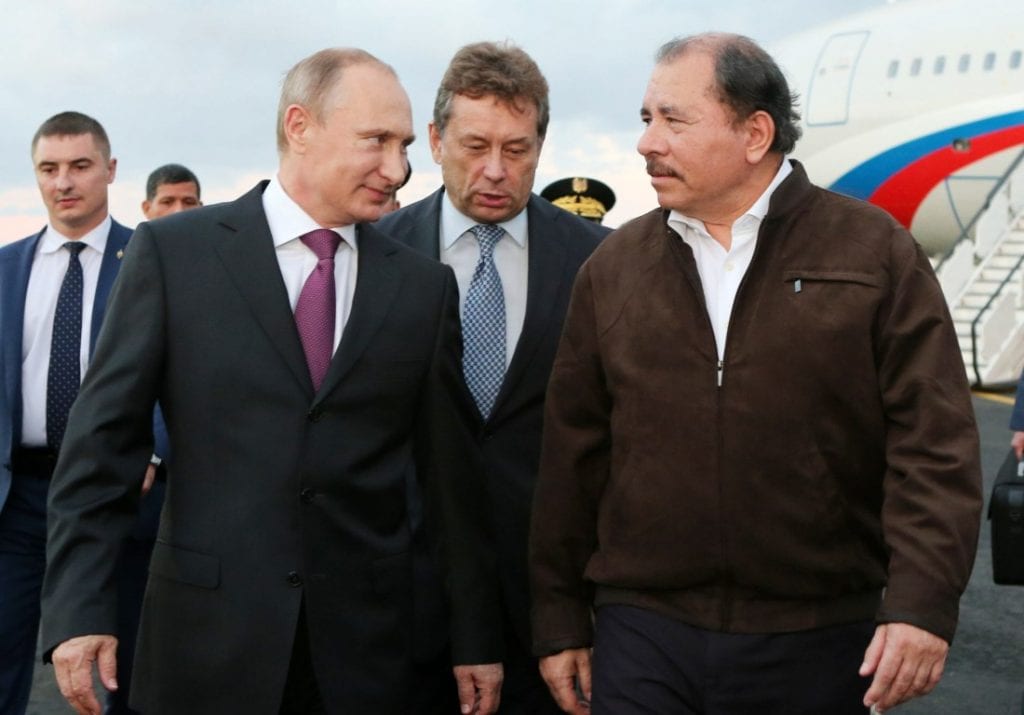Russian Presence in Nicaragua has the USA Concerned
The US suspects that Moscow in installing a spy base.
By Wilfredo Miranda Aburto (Confidencial)

HAVANA TIMES — The Russian military presence in Nicaragua still hasn’t “alarmed” the United States, but it has kept them on their toes “watching” while Moscow increases its cooperation efforts with Comandante Daniel Ortega’s government, which includes a fleet of war tanks.
A long feature published in the Washington Post analyzes the relationship between Russia and Nicaragua, and quotes different US government sources, among them Juan Gonzalez, who was the Deputy Assistant Secretary of State for Western Hemisphere Affairs during the Obama administration.
Gonzalez claims that Russia’s presence in Nicaragua should alarm the United States and other countries within the region because “Nicaragua is giving Russia a stronghold to expand its intelligence and interference capacity near the United States.”
The publication went on to talk about the installation of a Glonass satellite station, a Russian system which imitates the GPS in the United States. The location is on the edge of a volcano crater by Nejapa lagoon.
According to the Washington Post, US government officials suspect that this station has a double function: “The new Russian facilities could have “dual use” capabilities, particularly for electronic espionage aimed at the United States. Security analysts see the military moves in Central America as a possible response to the increased U.S. military presence in Eastern Europe, showing that Russia can also strut in the United States’ back yard,” the article states.
The US Department of State designated an official who is an expert in Russian affairs as Nicaragua’s Bureau official.
“Spy games and Washington-Moscow power struggles are old hat for Nicaragua, a country the size of Alabama with a rich Cold War history. The Soviet Union and Cuba provided soldiers and funding to help the government of Daniel Ortega and his leftist Sandinista National Liberation Front after they overthrew the US-backed dictator Anastazio Somoza in 1979. The CIA jumped in to back rebels known as the “contras” fighting the Sandinistas in a war that killed tens of thousands,” the Washington Post states putting things into context.
President Vladimir Putin’s change of heart towards Latin America is sparking different theories in the US, one of which is that this is his response to Obama’s administration sending more US troops and arms to NATO countries in Central and Eastern Europe.
“Others worry that Russia could be pursuing ambitious spy goals, such as intercepting Internet traffic in the ARCOS 1 fiber-optic cable that runs from Miami down the Caribbean coast of Central America. Speculation is rife that the new Russian satellite site on the lip of the Laguna de Nejapa crater will be a spy facility, even though Nicaraguan officials have said it will be used for GLONASS, Russia’s equivalent of GPS,” explains the publication.
Russia is currently building a new embassy in Managua and its cooperation with the Nicaraguan government in the fight against drugs has increased significantly.






My dad is a fan of the US’ relationship with Cuba because the US would have to rely on Cuba as a bulwark against possible Russian encroachment into LatAm as a result of Putin’s actions in Eastern Europe.
Despite all the bluster, Russia is little more than a pest in Latin America. With a shrinking economy one fifth the size of the US, Russia has no capacity to reinvigorate another Cold War version II.